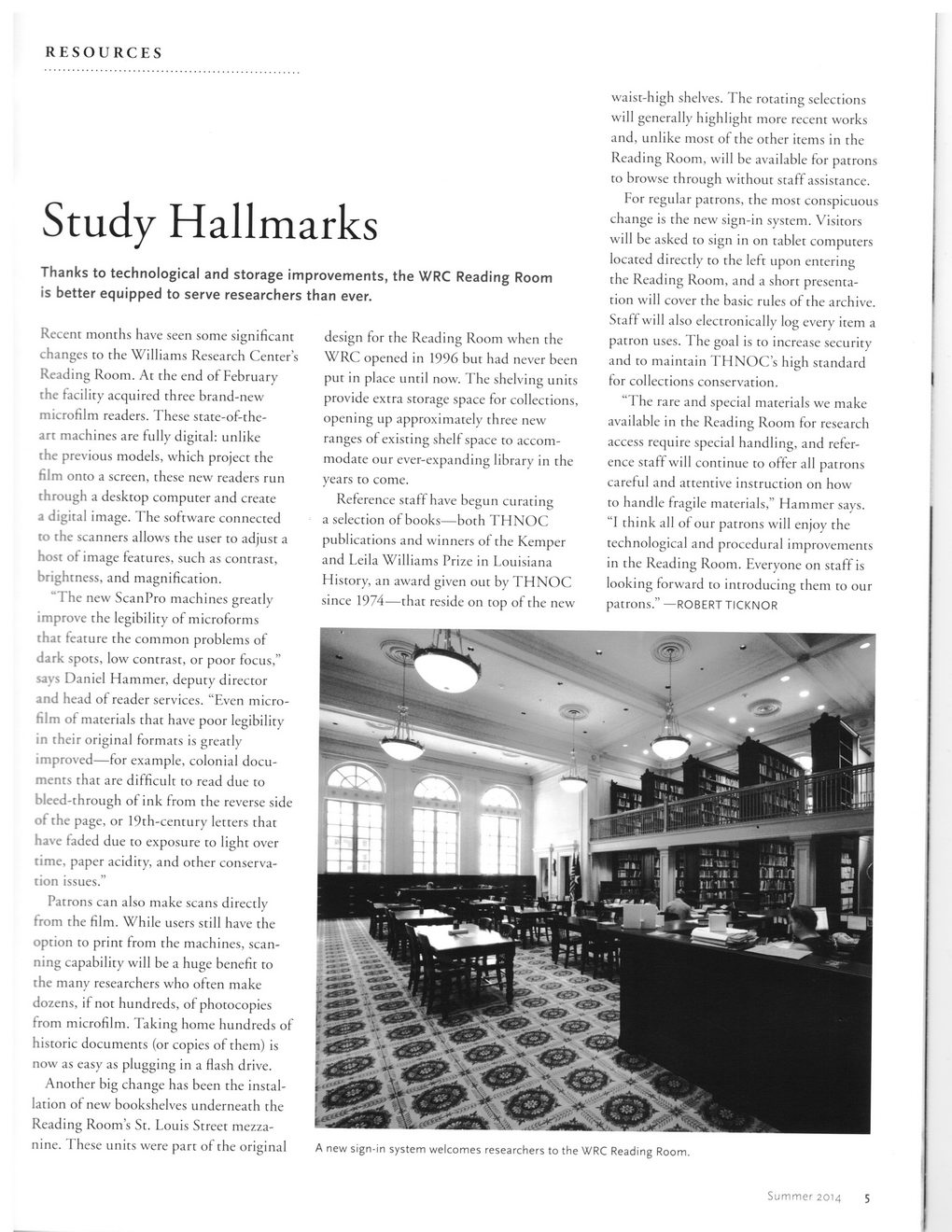This text was obtained via automated optical character recognition.
It has not been edited and may therefore contain several errors.
RESOURCES Study Hallmarks Thanks to technological and storage improvements, the WRC Reading Room is better equipped to serve researchers than ever. Recent months have seen some significant changes to the Williams Research Center’s Reading Room. At the end of February the facility acquired three brand-new microfilm readers. These state-of-the-art machines are fully digital: unlike the previous models, which project the film onto a screen, these new readers run through a desktop computer and create a digital image. The software connected to the scanners allows the user to adjust a host of image features, such as contrast, brightness, and magnification. “The new ScanPro machines greatly improve the legibility of microforms that feature the common problems of dark spots, low contrast, or poor focus,” says Daniel Hammer, deputy director and head of reader services. “Even microfilm of materials that have poor legibility in their original formats is greatly improved—for example, colonial documents that are difficult to read due to bleed-through of ink from the reverse side of the page, or 19th-century letters that have faded due to exposure to light over time, paper acidity, and other conservation issues.” Patrons can also make scans directly from the film. While users still have the option to print from the machines, scanning capability will be a huge benefit to the many researchers who often make dozens, if not hundreds, of photocopies from microfilm. Taking home hundreds of historic documents (or copies of them) is now as easy as plugging in a Hash drive. Another big change has been the installation of new bookshelves underneath the Reading Room’s St. Louis Street mezzanine. These units were part of the original design for the Reading Room when the WRC opened in 1996 but had never been put in place until now. The shelving units provide extra storage space for collections, opening up approximately three new ranges of existing shelf space to accommodate our ever-expanding library in the years to come. Reference staff have begun curating a selection of books—both THNOC publications and winners of the Kemper and Leila Williams Prize in Louisiana History, an award given out by THNOC since 1974—that reside on top of the new waist-high shelves. The rotating selections will generally highlight more recent works and, unlike most of the other items in the Reading Room, will be available for patrons to browse through without staff assistance. For regular patrons, the most conspicuous change is the new sign-in system. Visitors will be asked to sign in on tablet computers located directly to the left upon entering the Reading Room, and a short presentation will cover the basic rules of the archive. Staff will also electronically log every item a patron uses. The goal is to increase security and to maintain THNOC’s high standard tor collections conservation. “The rare and special materials we make available in the Reading Room for research access require special handling, and reference staff will continue to offer all patrons careful and attentive instruction on how to handle fragile materials,” Hammer says. “I think all of our patrons will enjoy the technological and procedural improvements in the Reading Room. Everyone on staff is looking forward to introducing them to our patrons.” —ROBERT TICKNOR Summer 2014 5

New Orleans Quarterly 2014 Summer (07)